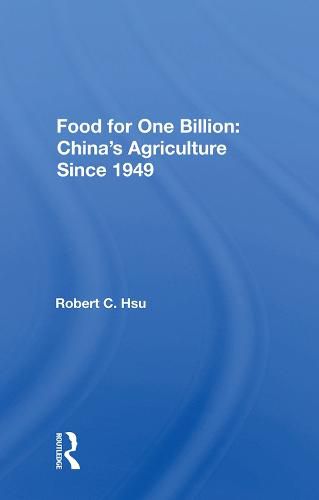Readings Newsletter
Become a Readings Member to make your shopping experience even easier.
Sign in or sign up for free!
You’re not far away from qualifying for FREE standard shipping within Australia
You’ve qualified for FREE standard shipping within Australia
The cart is loading…






This book examines the agricultural policies and programs adopted by the Chinese leadership since 1949 and analyzes the role of agriculture in China’s changing development strategies. Dr. Hsu gives particular attention to the measures intended to improve agricultural technology and to the sources of funds for agricultural investment. He concludes that, although the collective system has been effective in mobilizing China’s rural resources for agricultural development and in promoting progress in labor-intensive agricultural technology, periodic extreme leftist policies and interference by rural party cadres have caused various kinds of inefficiency, offsetting the advantages gained from collective farming. This is the first book to systematically analyze the ways in which China’s agricultural development is being financed. By critically examining the level and nature of state resources allocated to agriculture, the author challenges the view that China has pursued an agriculture-first strategy of economic development since the early 1960s.
$9.00 standard shipping within Australia
FREE standard shipping within Australia for orders over $100.00
Express & International shipping calculated at checkout
This book examines the agricultural policies and programs adopted by the Chinese leadership since 1949 and analyzes the role of agriculture in China’s changing development strategies. Dr. Hsu gives particular attention to the measures intended to improve agricultural technology and to the sources of funds for agricultural investment. He concludes that, although the collective system has been effective in mobilizing China’s rural resources for agricultural development and in promoting progress in labor-intensive agricultural technology, periodic extreme leftist policies and interference by rural party cadres have caused various kinds of inefficiency, offsetting the advantages gained from collective farming. This is the first book to systematically analyze the ways in which China’s agricultural development is being financed. By critically examining the level and nature of state resources allocated to agriculture, the author challenges the view that China has pursued an agriculture-first strategy of economic development since the early 1960s.